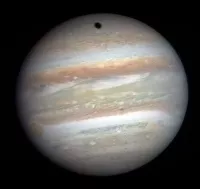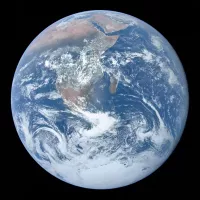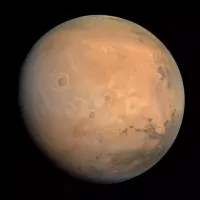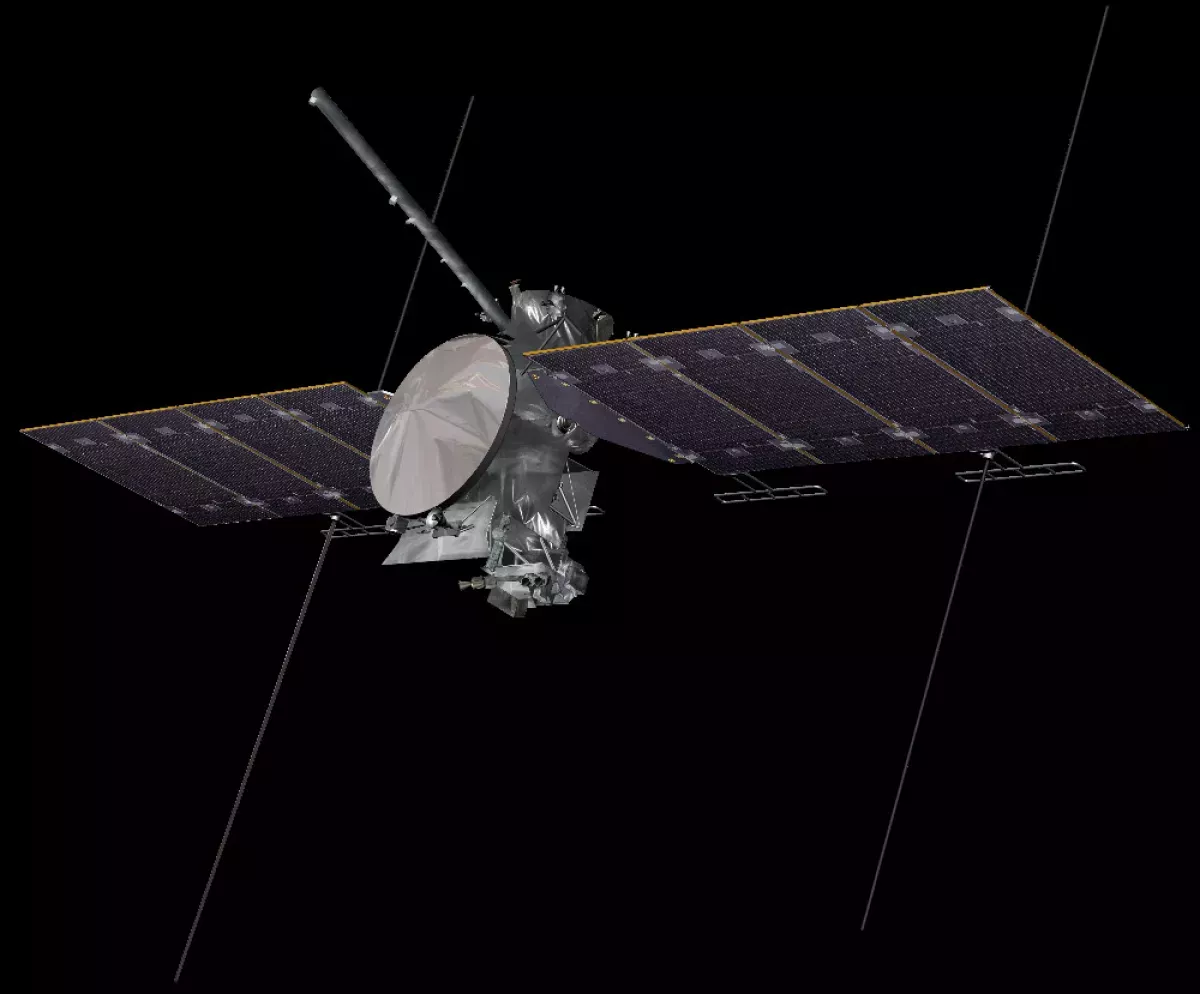December 8, 1995: Galileo Spacecraft Begins Primary Mission
On December 8, 1995, the Galileo spacecraft began its primary mission in Jupiter's orbit. This mission included key flybys of Europa, contributing significantly to our understanding of the moon's potential ocean beneath its ice crust.
1995: Galileo Spacecraft's Europa Observations Begin
In 1995, the Galileo spacecraft began its observations of Jupiter and its moons, including Europa. These observations provided initial evidence of a subsurface ocean beneath Europa's icy crust, setting the stage for future missions like Europa Clipper.
December 7, 1997: Galileo Europa Mission Commenced
On December 7, 1997, the Galileo spacecraft transitioned to the extended Galileo Europa Mission (GEM). This mission focused on additional flybys of Europa, providing further insights despite limited resources.
1997: Proposal of Europa Orbiter Mission
In 1997, a team proposed the Europa Orbiter mission for NASA's Discovery program. Although not selected, this proposal led to NASA's JPL indicating plans for a future Europa mission, laying groundwork for the Europa Clipper.
December 31, 1999: Completion of Galileo Europa Mission
On December 31, 1999, the Galileo Europa Mission concluded. This mission extension provided valuable data on Europa and other Jovian moons, influencing the design and goals of the future Europa Clipper mission.
2003: End of Galileo Mission's Observations
In 2003, the Galileo spacecraft concluded its mission after eight years of orbiting Jupiter. The data collected during this time, particularly about Europa, significantly advanced our understanding and led to the conception of future missions like Europa Clipper.
2011: Planetary Science Decadal Survey Suggestion
In 2011, the Planetary Science Decadal Survey suggested formulating a mission to Europa, leading to subsequent funding and development activities that paved the way for the Europa Clipper mission.
March 2013: Funding Authorization for Europa Mission Development
In March 2013, US$75 million was authorized to enhance the Europa mission's formulation, develop science goals, and initiate preliminary instrument development, building on recommendations from the 2011 Planetary Science Decadal Survey.
September 2013: Power Source Assessment for Europa Clipper
In September 2013, NASA assessed different power sources for the Europa Clipper mission. The assessment considered both radioisotope thermoelectric generators (RTGs) and photovoltaic (solar) power systems.
2013: Europa Mission Recommendation by National Research Council
In 2013, the National Research Council recommended a mission to Europa, highlighting its scientific significance. This recommendation played a crucial role in advancing the development of the Europa Clipper mission.
May 2014: Increased Funding for Europa Clipper
In May 2014, the U.S. House of Representatives significantly increased funding for the Europa Clipper mission, boosting the budget from US$15 million to US$100 million for 2014. This funding supported pre-formulation work crucial for the mission's progress.
October 3, 2014: Solar Panels Selected for Europa Clipper
On October 3, 2014, NASA announced that solar panels, rather than plutonium-powered generators, would be used to power the Europa Clipper spacecraft. This decision was driven by cost considerations and the practicality of using solar power despite the distance from the Sun.
April 2015: NASA's Invitation to ESA for Additional Probe
In April 2015, NASA invited the European Space Agency to propose a probe to accompany the Europa Clipper. This collaboration aimed to enhance the mission's scientific return with options like a lander or impactor.
May 2015: Nine Science Instruments Announced for Europa Clipper
In May 2015, NASA revealed the nine scientific instruments selected for the Europa Clipper mission. These instruments, with a total mass of 82 kg, will be essential for studying Europa's ocean, ice shell, composition, and geology.
May 2015: Selection of Instruments for Europa Clipper
In May 2015, NASA selected nine scientific instruments for the Europa Clipper, with a budget of US$110 million for their development. This selection was crucial for ensuring the mission's capability to study Europa's environment effectively.
June 2015: Approval of Europa Clipper Mission Concept
In June 2015, NASA approved the concept for the Europa Clipper mission, allowing it to progress to the formulation stage. This approval marked a significant step towards the mission's realization, setting the path for its detailed planning and development.
January 2016: Addition of Lander to Mission Concept
In January 2016, NASA approved the addition of a lander to the Europa Clipper mission concept, expanding its scientific potential. However, this plan was later canceled in 2017 due to risk assessments.
May 2016: Approval of Ocean Worlds Exploration Program
In May 2016, NASA approved the Ocean Worlds Exploration Program, which included the Europa mission. This program aimed to explore ocean worlds in the solar system, with Europa Clipper being a key component.
February 2017: Transition to Phase B for Europa Clipper
In February 2017, the Europa Clipper mission transitioned to Phase B, the preliminary design phase. This phase involved selecting subsystem vendors and building prototype hardware for the mission's science instruments.
July 18, 2017: House Space Subcommittee Hearings on Europa Clipper
On July 18, 2017, the House Space Subcommittee held hearings to discuss the Europa Clipper mission as part of NASA's Large Strategic Science Missions. The hearings also addressed the potential for a follow-up Europa Lander mission.
2017: Cancellation of Lander Addition
In 2017, NASA canceled the planned addition of a lander to the Europa Clipper mission, citing high risks. This decision refocused the mission on its primary objectives of studying Europa through flybys.
2019: Continuation of Phase B and Hardware Development
In 2019, the Europa Clipper mission continued in Phase B, focusing on developing and testing spacecraft sub-assemblies and hardware elements for its science instruments, preparing for subsequent mission phases.
2020: Cost Estimate Increase for Europa Mission
In 2020, the estimated cost for the Europa Clipper mission rose to US$4.25 billion, reflecting the project's complexity and scope. This increase underscored the mission's importance and the resources needed for its success.
January 25, 2021: Shift to Commercial Launch Vehicle
On January 25, 2021, NASA officially directed the Europa Clipper mission team to stop efforts to maintain compatibility with the Space Launch System (SLS) and proceed with a commercial launch vehicle.
February 10, 2021: Mission Trajectory and Launch Dates Announced
On February 10, 2021, NASA announced a 5.5-year trajectory for Europa Clipper to reach the Jupiter system. The trajectory included gravity assists from Mars in February 2025 and Earth in December 2026, with a launch targeted between October 10 and 30, 2024.
July 2021: Falcon Heavy Selected as Launch Vehicle
In July 2021, NASA selected SpaceX's Falcon Heavy to launch the Europa Clipper mission. Factors considered included launch cost savings (estimated at US$2 billion), the availability of the Space Launch System (SLS) given its commitment to the Artemis program, and the potential impact of vibrations generated by the SLS's solid rocket boosters on the spacecraft.
2021: Congressional Directive for Launch Vehicle Competition
In 2021, the United States Congress passed an omnibus spending bill that directed NASA to hold a competition for a commercial launch vehicle for Europa Clipper if certain conditions related to the availability of NASA's Space Launch System (SLS) were not met.
June 2022: Consideration of Probe Disposal on Ganymede
In June 2022, Europa Clipper planners considered disposing of the probe by crashing it into Ganymede for planetary protection, pending approval of an extended mission. This disposal would aid ESA's JUICE mission in studying Ganymede's surface chemistry.
April 2023: Launch of JUICE Spacecraft
The European Space Agency's Jupiter Icy Moons Explorer (JUICE) spacecraft was launched in April 2023. JUICE's mission is to study three of Jupiter's icy moons: Ganymede, Callisto, and Europa.
June 2023: "Message In A Bottle" Campaign
In June 2023, NASA launched the "Message In A Bottle" campaign, inviting people worldwide to send their names to Europa aboard the Europa Clipper spacecraft. The names will be engraved on a microchip, accompanying a poem by U.S. Poet Laureate Ada Limón, symbolizing humanity's desire to explore the unknown.
2023: Launch of ESA's Jupiter Icy Moons Explorer
In 2023, the European Space Agency launched the Jupiter Icy Moons Explorer, which will complement the Europa Clipper's mission by conducting flybys of Europa and other Jovian moons before orbiting Ganymede.
June 2024: Discovery of Component Radiation Hardening Issues
In June 2024, the Europa Clipper team discovered issues with the radiation hardening of its components. This discovery raised concerns about potential launch delays, which were eventually resolved, allowing the mission to proceed.
September 2024: Approval for October 2024 Launch
In September 2024, the Europa Clipper mission was approved for an October launch window, overcoming previous concerns about component radiation hardening and potential delays.
October 6, 2024: Launch Delay Announcement Due to Hurricane
On October 6, 2024, NASA announced a delay in the Europa Clipper's launch due to Hurricane Milton. Originally scheduled for October 10, the launch was postponed to ensure safety and mission success.
October 10, 2024: Launch Window Approval for Europa Clipper
In October 2024, a launch window opening on October 10 was approved for the Europa Clipper mission. However, due to unforeseen circumstances, the actual launch was delayed to October 14, 2024.
2024: Publication on Europa Clipper Mission Duration and Disposal
In 2024, Robert Pappalardo published a paper detailing the Europa Clipper mission's planned four-year duration in Jupiter orbit and its potential disposal on Ganymede, providing insights into mission planning and planetary protection strategies.
2024: Launch Window for Europa Clipper
The primary launch window for Europa Clipper is set for a 21-day period between October 10 and 30, 2024. Backup launch opportunities are available in 2025 and 2026.
April 2030: Arrival at Jupiter
Europa Clipper is expected to arrive at Jupiter in April 2030, after a journey of approximately 5.5 years. The spacecraft will then begin its mission to study Jupiter's moon Europa.
April 2030: Europa Clipper's Expected Arrival at Europa
In April 2030, the Europa Clipper is anticipated to arrive near Europa. This marks a significant milestone in the mission, allowing for extensive study of the moon through close flybys.
2030: Europa Clipper Arrival in Jupiter System
In 2030, the Europa Clipper is expected to arrive in the Jupiter system. Upon arrival, it will conduct numerous flybys of Europa, contributing to our understanding of the moon's characteristics and potential habitability.
July 2031: JUICE Spacecraft Arrival at Jupiter
The JUICE spacecraft is expected to arrive at Jupiter in July 2031. JUICE will study the Jovian system, particularly its icy moons, providing valuable data that will complement the observations of Europa Clipper.
September 2034: Targeted Disposal Date for Europa Clipper
On September 3, 2034, Europa Clipper is tentatively scheduled for disposal by impacting Ganymede, contingent on the approval of an extended mission. This action is intended to prevent contamination and assist in further studies of Ganymede.
Mentioned in this timeline

Jupiter is the fifth and largest planet from the Sun...

SpaceX founded in is a private American aerospace manufacturer and...
NASA the National Aeronautics and Space Administration is an independent...

Earth the third planet from the Sun is unique in...

Falcons are birds of prey belonging to the genus Falco...

Mars is the fourth planet from the Sun known as...
Trending

1 month ago Doncic's words to Reaves after injury; Lakers preview without LeBron James.

7 months ago Max Christie's Connection to Doug Christie Explored Amid Mavericks' Winning Streak.
1 month ago Karoline Leavitt Blasts Reporter Over 'Bulls--t' Questions; White House Responds Wildly.

8 months ago NBA Rescinds Doncic's Technical Foul After Lakers Star Blamed Ref's Error.
29 minutes ago Matt Rogers' brief moment: Comedian strips down, ignites wild reactions, fans are feral.

4 months ago Mookie Betts Takes Leadoff as Ohtani Moves Down Amid Season-Long Slump
Popular
Aftyn Alyssa Behn is an American politician currently serving as...

William Franklin Graham III commonly known as Franklin Graham is...

Candace Owens is an American conservative political commentator and author...

XXXTentacion born Jahseh Dwayne Ricardo Onfroy was a controversial yet...

Marjorie Taylor Greene known as MTG is a U S...

Cristiano Ronaldo often nicknamed CR is a Portuguese professional footballer...
